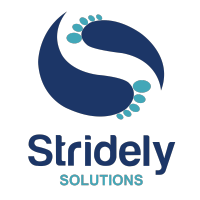If you have worked in structural engineering for a while, you probably noticed how quickly tools are changing. A few years back, detailers still spent half their day adjusting drawings and cleaning data for fabrication. Now, things feel different. Tekla Structures 2025 shows how much smarter our workflows can become when automation, AI, and cloud systems finally start speaking the same language.
Tekla has always been powerful with automation. The 2025 version gives engineers a taste of how artificial intelligence can quietly make repetitive tasks lighter, and how cloud collaboration makes teamwork smoother without needing endless file transfers.
Smarter drawings with AI assistance
One of the most impressive updates inside Tekla 2025 is the new feature that uses artificial intelligence for creating fabrication drawings. It learns from earlier drawings stored in a shared cloud collection and automatically suggests layouts, labels, and dimension settings for new parts. It remembers the company standards and previous detailing habits, so instead of repeating the same setup repeatedly, the system does most of the heavy lifting.
Engineers can still review and edit, but the time spent on repetitive drawing preparation drops sharply. This use of AI is practical, not theoretical. It builds on the real data that the company already has, which means every new drawing becomes a little bit smarter than the last one.
Working together without being in one room
Tekla Structures 2025 links better with Trimble Connect, which now acts as the shared space for models, markups, and fabrication data. The new PowerFab connector helps teams sync assemblies and material information directly with production systems, avoiding manual imports or version confusion.
When every update in the model reflects instantly across detailing and fabrication, people start trusting the digital model again. You also get better traceability because all revisions are logged automatically. For teams that operate across offices or locations, this kind of real-time syncing feels like a relief after years of chasing the latest version over email.
Automation still drives the biggest gain
The Open API gives developers almost endless room to create macros, rules, and custom components that fit real shop practices.
At Stridely, we have leaned heavily into this. Many of our clients wanted faster, cleaner workflows without losing control of detailing logic. Our team built plugins that generate fabrication drawings in batches, populate attributes automatically, and push data straight into ERP systems. These small scripts may not look flashy, but they free engineers from constant repetition and make project data cleaner across every department.
Learn More – A Practical Guide to Manage Macros and Plugins in Tekla Structures
The benefit is two-fold. Engineers spend less time clicking through routine tasks, and project data stays consistent across all departments. It is a quiet form of innovation that saves both time and rework without changing the way people think.
AI fits best inside Tekla Automation
AI can support automated clash detection, flag missing attributes, or even suggest connections based on geometry and loading.
For a company that already uses Tekla macros, combining AI with automation can create a continuous improvement loop. The scripts handle deterministic tasks, and AI layers add adaptive logic that learns from project data. In practice, it means every project trains the system a bit more, leading to better decisions and faster detailing cycles.
Stridely is actively experimenting in this space, exploring AI routines that analyze model data for quality and suggest corrections before drawings are generated. The approach is to make AI an assistant that checks the work, not a black box that hides the logic.
The power of cloud collaboration
The shift toward connected workflows is not just about convenience. Cloud collaboration changes how teams coordinate and verify designs. With Tekla and Trimble Connect working together, detailers, engineers, fabricators, and site teams can all access the same model in real time.
Version control becomes automatic. Comments and mark-ups are tied directly to the 3D objects instead of scattered through emails and screenshots. Conflicts that might have taken days to surface now appear instantly. For distributed teams, that transparency is often the difference between catching a problem in design or discovering it in fabrication.
The bigger advantage is that cloud collaboration supports data continuity across the project lifecycle. The same model informs design, fabrication, erection, and maintenance. It is not a different dataset for each phase, but a living model that travels with the project.
Tekla 2025: Interoperability and smarter data
Another quiet but important enhancement in Tekla 2025 is better interoperability through formats like TrimBIM and IFC. TrimBIM now supports richer property data, which means smoother exchange with other platforms. This improvement matters when projects combine Tekla with Revit, ArchiCAD, or Navisworks. The idea is to make model-based coordination stronger than drawing-based reviews.
Learn More – AI-Powered Tekla Services Shaping the Future of Construction
Data integrity has always been a challenge in large construction projects. These interoperability updates are not flashy, but they help ensure that every stakeholder works on the same truth. That consistency is what makes automation, AI, and cloud collaboration all work together properly.
Real-world success with Tekla automation
A good example of how automation can transform operations comes from one of Stridely’s recent projects with a leading building manufacturer in North America. The client’s legacy system relied on outdated 2D processes that made modeling slow and error-prone. Stridely implemented Tekla Structures integrated with Tekla Open API to automate drafting of pre-engineered steel building structures.
Custom plugins were developed to generate shop drawings, anchor rod layouts, and bills of materials directly within Tekla. The solution also moved their workflows to the cloud, enabling teams to work on shared models without version confusion. This brought measurable gains—faster drawing preparation, reduced lead time, and better design accuracy. The client now enjoys a flexible, future-ready setup that supports real-time modifications and smooth collaboration across teams.
Read full case study – Construction Modeling and Detailing with Tekla Structures for a building manufacturer leader
The way ahead
The combination of Tekla, AI, and cloud collaboration is setting the tone for how engineering projects will operate in the coming decade. Tekla 2025 proves that automation is no longer about writing macros; it is about connecting intelligent systems that understand how engineers work.
If you are looking to modernize your detailing or streamline your fabrication process, Stridely experts can help you get there. Contact us today.
FAQs
1. How does Tekla 2025 use AI in structural engineering?
Tekla 2025 applies AI to learn from previous drawings and detailing standards. It automatically suggests dimensions, layouts, and labels, helping engineers cut down repetitive setup work and improve drawing accuracy over time.
2. What benefits does cloud collaboration bring in Tekla 2025?
Cloud collaboration through Trimble Connect lets all project teams access the same model in real time. It eliminates confusion over versions, reduces manual coordination, and ensures transparency across detailing, fabrication, and erection stages.
3. Can automation be customized in Tekla Structures?
Yes. Tekla’s Open API allows developers to create custom plugins, macros, and rules that fit specific project workflows. Many companies, including Stridely, use this flexibility to automate drawing generation, attribute population, and data integration with ERP systems.
4. How can Stridely help with Tekla automation or integration?
Stridely offers consulting and implementation support for Tekla automation, AI-based model checks, and connected fabrication workflows. The goal is to help teams move toward faster, smarter, and more accurate engineering environments.


